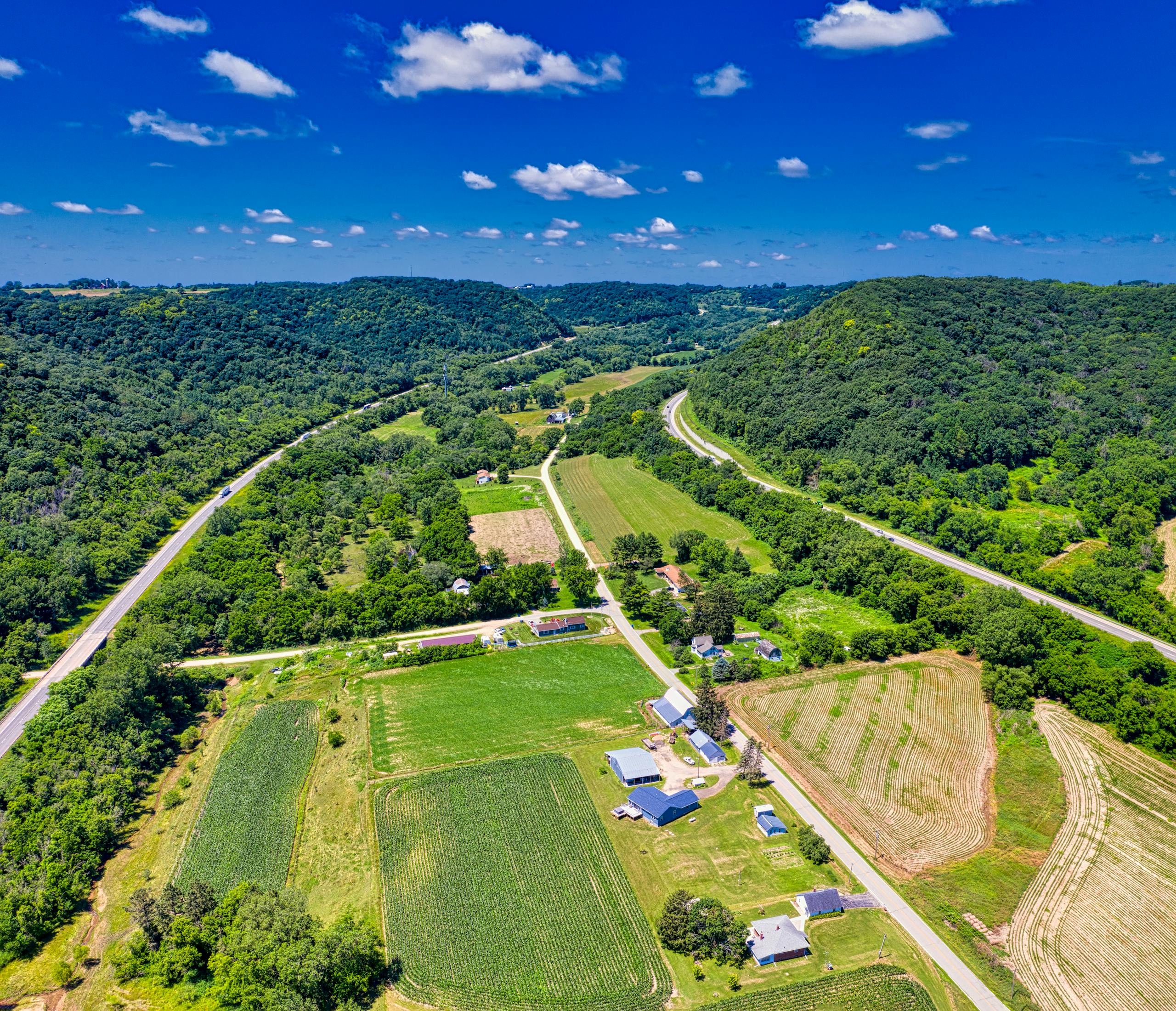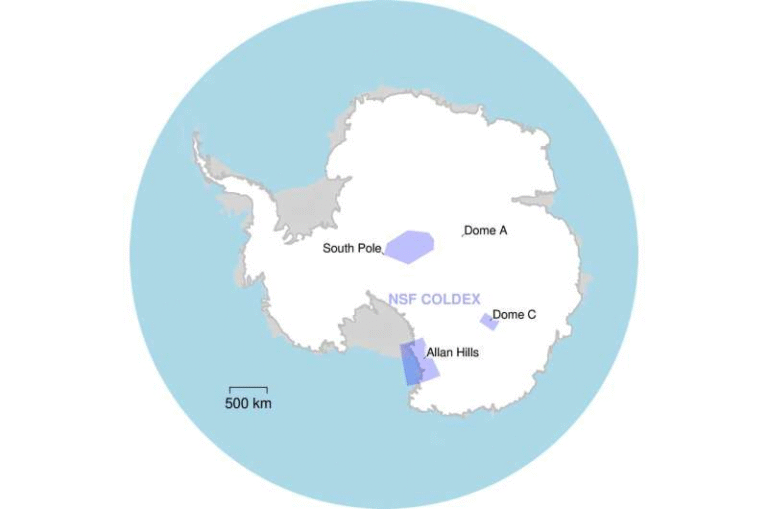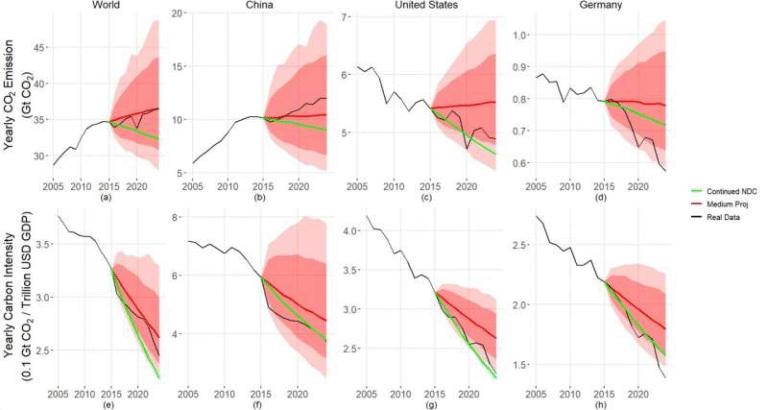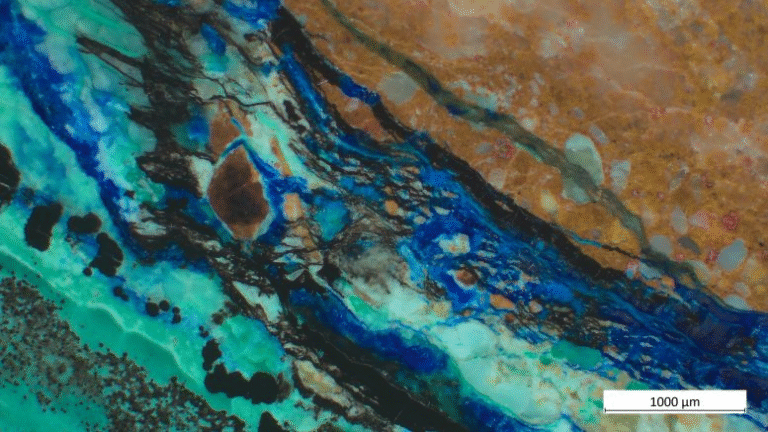Retired Farmlands Could Store Carbon for Decades, Says 40-Year Study

A fascinating new study suggests that abandoned or retired farmlands may hold the key to long-term carbon storage — and potentially help tackle climate change in the process. Researchers at the University of Minnesota’s Cedar Creek Ecosystem Science Reserve have found that when farmlands stop receiving fertilizer and tilling, the carbon gains in their soils can persist for decades.
The study, led by professors Eric Seabloom, Elizabeth Borer, and Sarah Hobbie from the College of Biological Sciences, was recently published in Nature Geoscience. It’s based on an extraordinary 40-year experiment — one of the longest ecological studies of its kind — examining how nutrients like nitrogen affect the ability of soils to store carbon once farmland is retired.
Understanding the Problem: Carbon, Nutrients, and Human Impact
Burning fossil fuels has loaded Earth’s atmosphere with carbon dioxide (CO₂), pushing the planet into an era of extreme heat and unpredictable weather. At the same time, decades of farming and fertilization have added huge amounts of nitrogen and phosphorus — key nutrients in fertilizers — to the environment.
While these nutrients make crops and lawns grow faster, they also cause serious ecological problems: water pollution, invasive species spread, and the loss of native plants. But there’s a catch — those same nutrients can also help plants capture more CO₂ from the atmosphere and store it in the soil.
This creates a tricky balance for scientists and policymakers. If we try to reduce nutrient pollution, will we accidentally release stored carbon back into the air? Or could we clean up ecosystems and keep that carbon locked in the soil?
The Long-Term Experiment at Cedar Creek
To answer these questions, researchers turned to the Cedar Creek Ecosystem Science Reserve, located in central Minnesota. The site has been at the heart of many landmark ecology experiments since the 1980s.
In this particular study, scientists used abandoned croplands — fields that were once actively farmed and tilled, but later left to recover naturally. Over the course of four decades, they carefully observed how different treatments of nutrient addition and tillage affected soil carbon storage.
The setup was simple but profound:
- Some plots received fertilizer containing nitrogen (N) and other nutrients such as phosphorus (P), potassium (K), calcium (Ca), and magnesium (Mg).
- Other plots were left unfertilized as a control.
- All plots were originally tilled — mimicking intensive farming conditions — but then tillage was stopped, allowing the soil to stabilize and natural vegetation to return.
By tracking these changes year after year, scientists could see not only how soils responded to nutrient inputs but also how they evolved once fertilization and tilling ended.
What the Researchers Found
The findings were surprisingly optimistic.
- Nutrient addition increased soil carbon storage during the years of intensive tilling.
- When fertilization and tilling stopped, those carbon gains persisted for at least three decades — even though the visible plant growth above the soil had gone back to normal levels.
- Soil carbon remained elevated even as plant communities and species composition recovered to their pre-fertilization state.
- Most importantly, these carbon gains lasted as long as the soil remained untilled.
In plain terms: once the soil had absorbed extra carbon, that carbon stayed locked away for a very long time — as long as humans didn’t disturb the soil again.
The results challenge a common assumption that carbon stored through fertilization might quickly escape once those inputs stop. Instead, the study shows that retired farmland can act as a lasting carbon sink, even decades after the end of fertilizer use.
Why This Matters for Climate and Conservation
This research lands right in the middle of an important environmental debate. On one side, reducing fertilizer use is essential to protect waterways, biodiversity, and overall ecosystem health. On the other, fertilized lands tend to hold more carbon, which helps fight climate change.
The Cedar Creek findings show that we can reduce nutrient pollution without losing soil carbon — a win for both environmental goals. That’s encouraging news for climate policy and land management strategies.
As more farmland across North America is retired due to changing agricultural economics and improved efficiency, this type of land could become a powerful tool for carbon sequestration. Retired or “set-aside” lands could be managed to lock carbon in the soil while also restoring native species and supporting biodiversity.
The Bigger Picture: What Is Carbon Sequestration?
To appreciate why this study matters, it helps to understand what carbon sequestration actually means.
Carbon sequestration is the process of capturing and storing atmospheric carbon dioxide in natural systems like forests, oceans, and soils. Plants take in CO₂ during photosynthesis, using it to grow. Some of that carbon ends up in roots, litter, and soil organic matter — where it can stay for decades or even centuries.
Soil is one of the largest carbon reservoirs on the planet, holding about three times more carbon than the atmosphere. But how much carbon soil stores depends heavily on human activity — especially agriculture, tillage, and fertilization.
Tilling the soil exposes buried organic matter to oxygen, accelerating its breakdown and releasing carbon back into the air. Fertilization, meanwhile, can increase plant growth and root biomass, adding more carbon to the soil — but it also risks runoff and pollution.
That’s why the Cedar Creek results are so compelling: they show that once tilling stops, and the land is allowed to rest, much of that carbon can remain safely stored.
Lessons for Land Management
The message for land managers and policymakers is clear:
- Avoid tilling retired land. Even light disturbance can unlock decades of stored carbon.
- Don’t rely solely on short-term studies. The Cedar Creek experiment proves that long-term research — spanning decades, not years — is vital to understanding slow ecological processes like soil carbon accumulation.
- Use retired croplands strategically. With careful management, these lands can serve as long-term carbon stores, wildlife habitats, and areas for recreation or conservation.
- Balance nutrient management. It’s possible to curb nutrient pollution while still retaining soil carbon, as long as soil structure and microbial life are maintained.
This kind of long-term ecological perspective is rare but crucial. Soils don’t respond to changes overnight — they carry the memory of decades of human activity.
Beyond the Study: The State of Retired Cropland in North America
Across the United States and Canada, millions of acres of farmland have been taken out of production. Some of this land is part of conservation programs like the U.S. Conservation Reserve Program (CRP), which pays farmers to retire marginal lands and plant grasses or trees to prevent erosion and restore ecosystems.
These lands are often seen as underused or economically idle — but the new findings suggest they could play a much larger role in climate mitigation. If managed to minimize soil disturbance, they can become long-term carbon vaults while supporting biodiversity.
This could also open new opportunities for carbon credit programs, where farmers or landowners are paid for the carbon their land stores. With the right monitoring systems and verification standards, retired farmland could become a valuable asset in both ecological and economic terms.
What Makes Cedar Creek Special
The Cedar Creek Ecosystem Science Reserve is one of the world’s premier sites for long-term ecological research. Located about 30 miles north of Minneapolis, it includes forests, prairies, and old farmlands that have been the setting for groundbreaking studies on biodiversity, nutrient cycling, and ecosystem change.
The site is also part of the Long Term Ecological Research (LTER) network — a group of research sites funded to collect continuous ecological data over decades. Such long-term experiments are incredibly rare but essential. Ecosystems change slowly, and only by watching them over multiple generations can we truly understand how they respond to human influence.
That’s why Seabloom and his colleagues emphasize that multi-decadal data are key to making informed environmental decisions. Short-term studies might miss the bigger picture entirely.
The Science in Numbers
Although the study’s abstract doesn’t specify exact tonnage, similar long-term soil studies have found that retired croplands can store 0.3 to 1.0 metric tons of carbon per hectare per year, depending on soil type, vegetation, and climate. Over 30 years, that’s a meaningful amount of CO₂ locked away.
Multiply that across millions of acres of retired farmland, and the potential impact on atmospheric carbon levels becomes clear. These systems may not replace forests as carbon sinks, but they represent an untapped opportunity that aligns with both agricultural transition and climate goals.
Challenges and Next Steps
Despite the good news, there are still open questions. How permanent are these carbon gains if climate conditions change drastically? What happens during droughts or heavy rainfall events? And could certain soil types store carbon more effectively than others?
Future research will likely explore how these findings apply to different landscapes — from the Great Plains to Europe’s fallow farmlands. There’s also growing interest in how microbial activity and soil chemistry influence long-term carbon storage after nutrient inputs end.
The study’s authors also suggest that collaboration with rural communities, conservationists, and policymakers will be essential. Retired farmland could become a hub for carbon storage, habitat restoration, recreation, and rural development — if managed with care and scientific insight.
Final Thoughts
The Cedar Creek study offers a rare dose of optimism in environmental science. It shows that even landscapes once degraded by intensive farming can recover and serve the planet again — not just by growing crops, but by quietly storing carbon underground for generations.
Retired croplands aren’t just forgotten fields. They might be one of our most reliable allies in the fight against climate change.
Research Reference:
Multidecadal persistence of soil carbon gains on retired cropland following fertilizer cessation — Nature Geoscience (2025)





